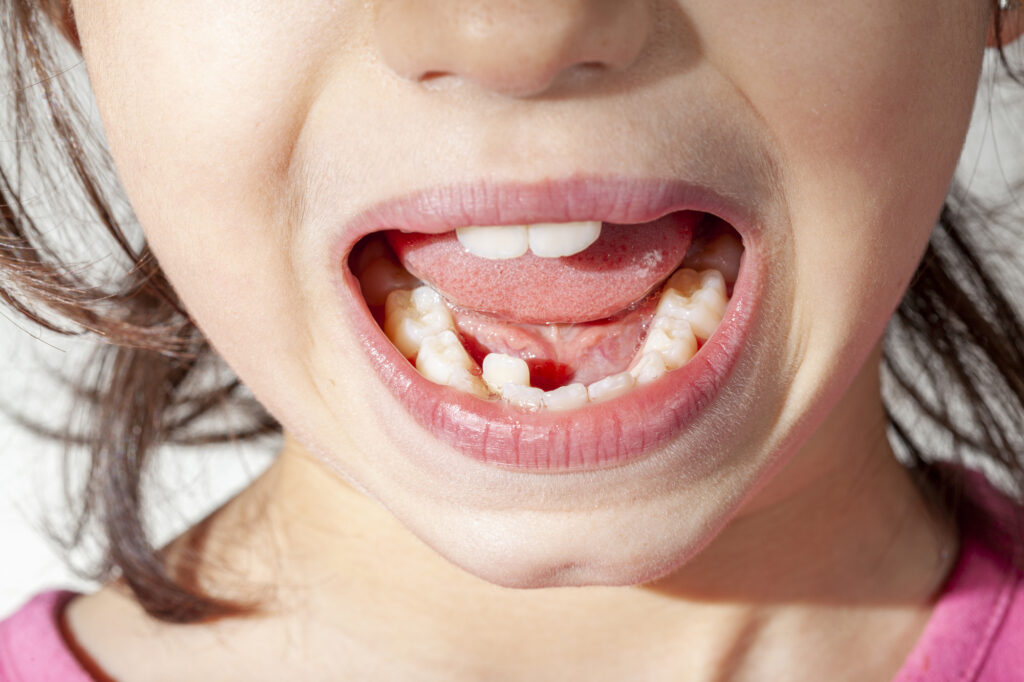
Misaligned teeth, also known as malocclusion, can hinder both your dental health and your self-esteem. But why, exactly, do teeth become misaligned? Are we simply born to have crooked teeth, or do environmental factors play a role? The answer is that misaligned teeth can occur for a number of reasons or a combination of causes.
About Misalignment
Malocclusion refers to the imperfect alignment of teeth within the upper and lower jaws. This condition can manifest in different ways, including overcrowding, spacing issues, overbites, underbites, or crossbites. Malocclusion is not an uncommon issue; in fact, the American Association of Orthodontists states that nearly 75% of people in the United States have some form of malocclusion.
From an evolutionary standpoint, the leading theory is that our distant ancestors had a diet that was considerably tougher to chew compared to farmed and, later, highly processed foods. The ancestral diet required more robust, larger jaws with plenty of space for teeth to grow and function effectively. However, as our diet evolved over time, jaws began to shrink in size, leaving inadequate space for our teeth. This evolutionary mismatch is one of the contributing factors to the high prevalence of malocclusion in modern humans.
Why Alignment is Important
When teeth are aligned correctly, it’s easier to maintain good oral hygiene, reducing the risk of dental issues like gum disease and cavities. Additionally, aligned teeth promote proper chewing and digestion. Beyond the health benefits, a straight smile can significantly improve your self-confidence and improve your overall quality of life, as it enhances your appearance and makes you feel more comfortable and assured in social and professional settings.
Causes of Misaligned Teeth
There are several factors that can lead to misaligned teeth, some of which are beyond our control. Let’s explore the most common causes.
Genetics
Your genetic makeup plays a pivotal role in the shape and size of your jaws, as well as the size of your teeth and their alignment. Additionally, discrepancies in the size of either the upper and lower jaws can lead to overbites, underbites, or crossbites. Orthodontic treatment can help address these jaw size discrepancies. If your family has a history of misaligned teeth, there’s a higher likelihood that you may inherit this condition.
Childhood Habits
Habits formed during childhood, such as thumb-sucking, tongue-thrusting, or prolonged use of pacifiers or bottles, can exert pressure on developing teeth and jaws, resulting in misalignment. It’s incredibly important for parents to be aware of these habits and take steps to discourage them early on.
Early Tooth Loss
Losing primary teeth prematurely can disrupt the natural development of adult teeth. Surrounding teeth can sometimes shift to fill the gap, leading to misalignment. Timely dental care can prevent these issues from worsening.
Dental Decay and Gum Disease
Tooth decay and gum disease contribute to misaligned teeth by causing tooth loss and shifting of adjacent teeth. Being diligent about oral hygiene and regular dental check-ups is essential for prevention.
Trauma and Injury
Accidents or injuries to the face or mouth can dislodge teeth from their natural positions, resulting in misalignment. Orthodontic treatment may be necessary to realign affected teeth.
Correcting Malocclusion
If you are one of the many, many people who have tooth misalignment issues, a healthy smile is within your reach, regardless of the causes. If you or a loved one are experiencing issues with tooth alignment, we encourage you to take the first step toward improving your smile and your dental health by contacting our office. We are dedicated to helping you address the root causes of misalignment and providing personalized treatment options just for you.





